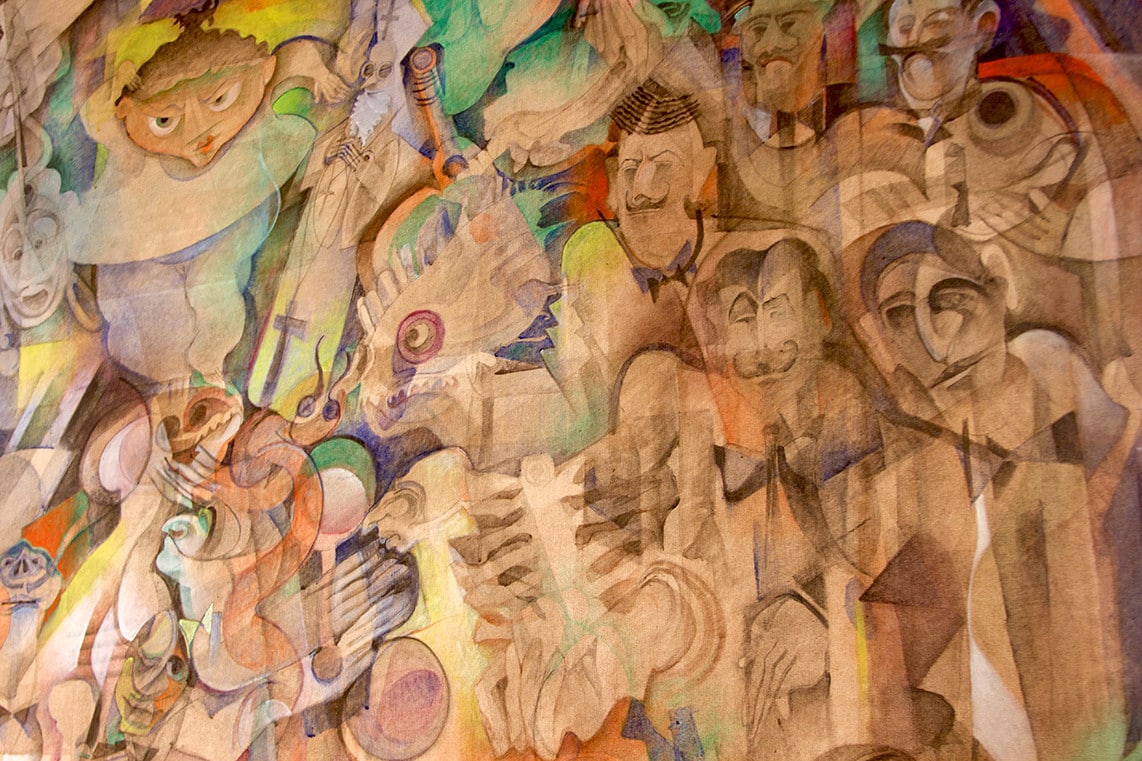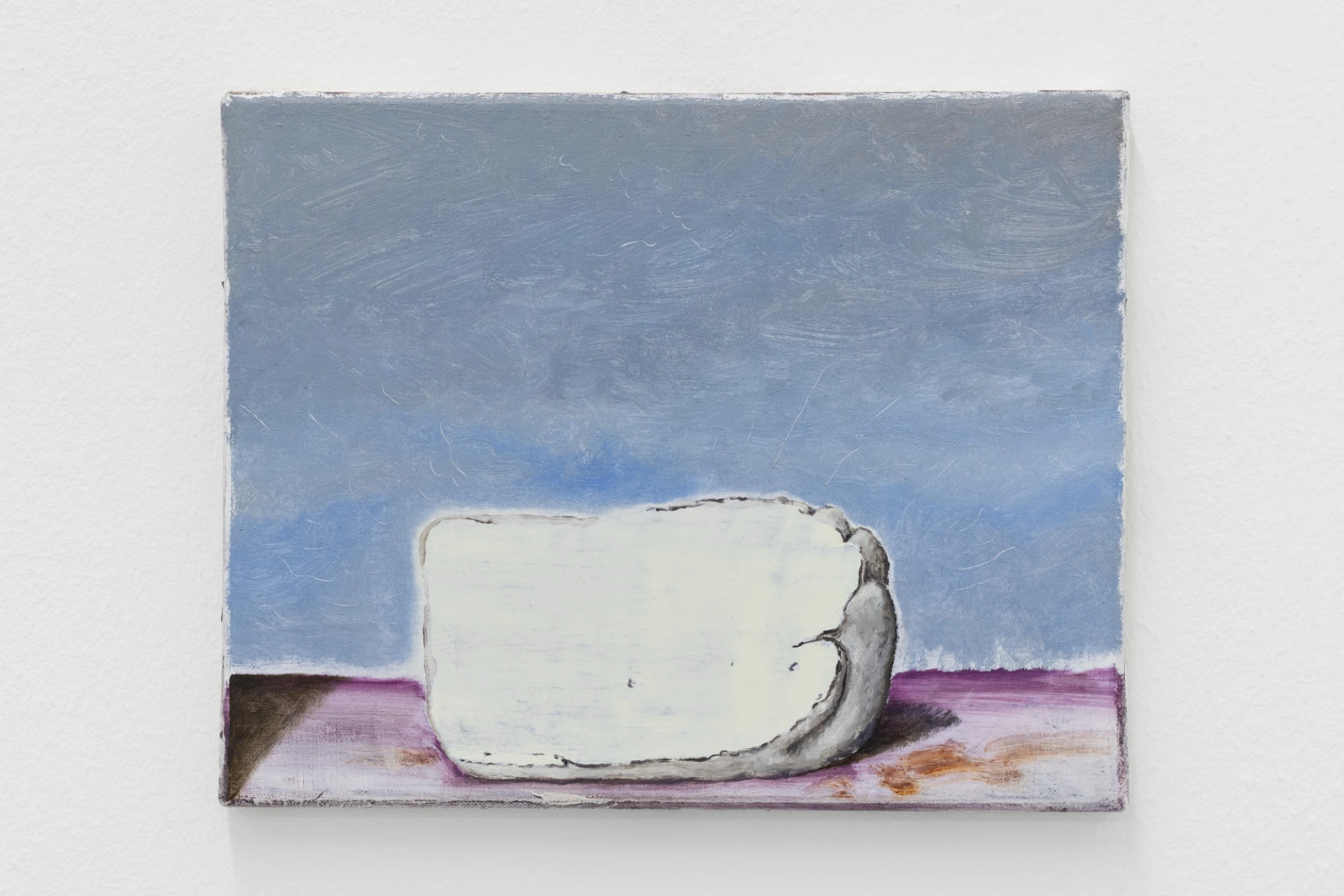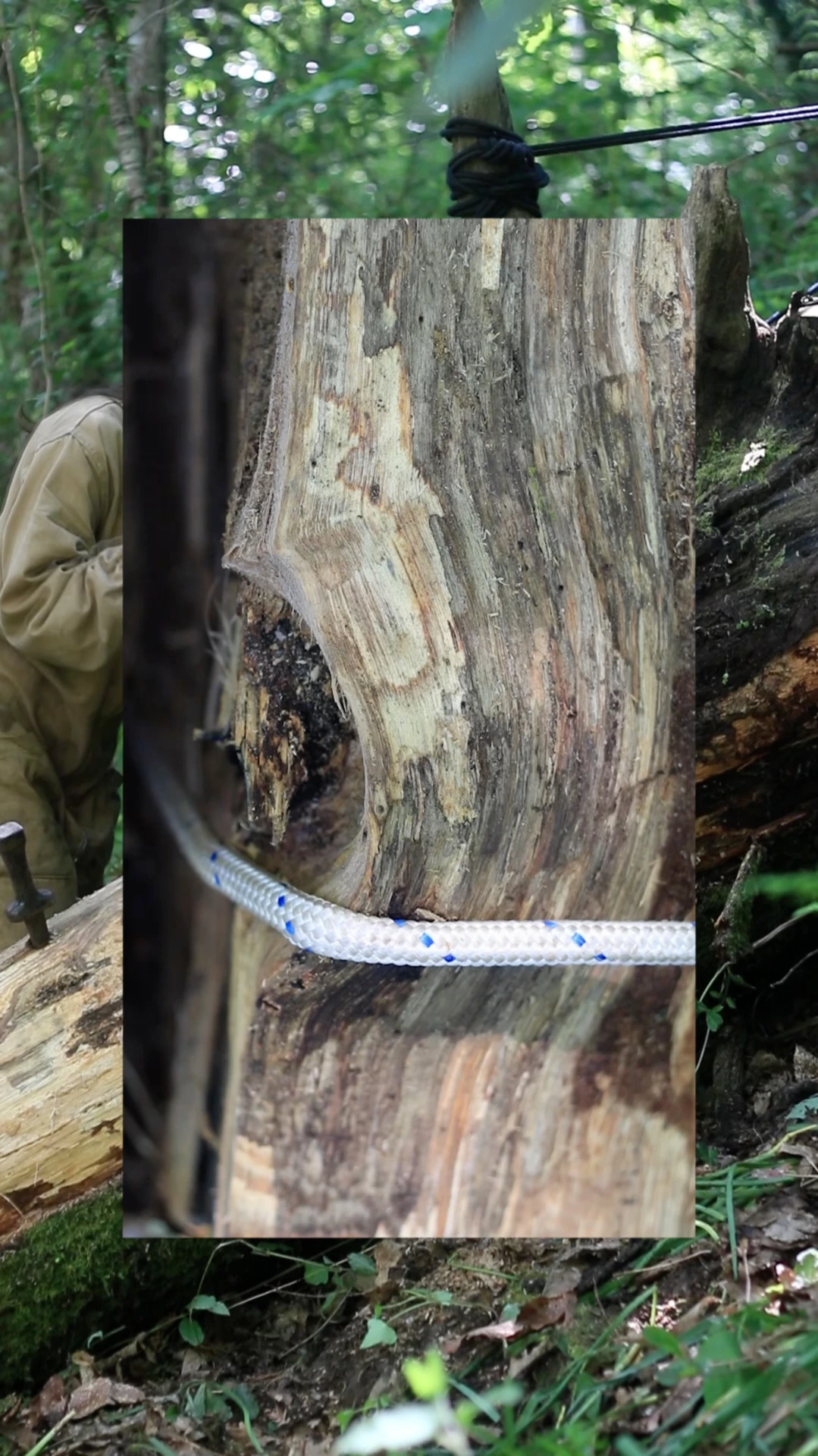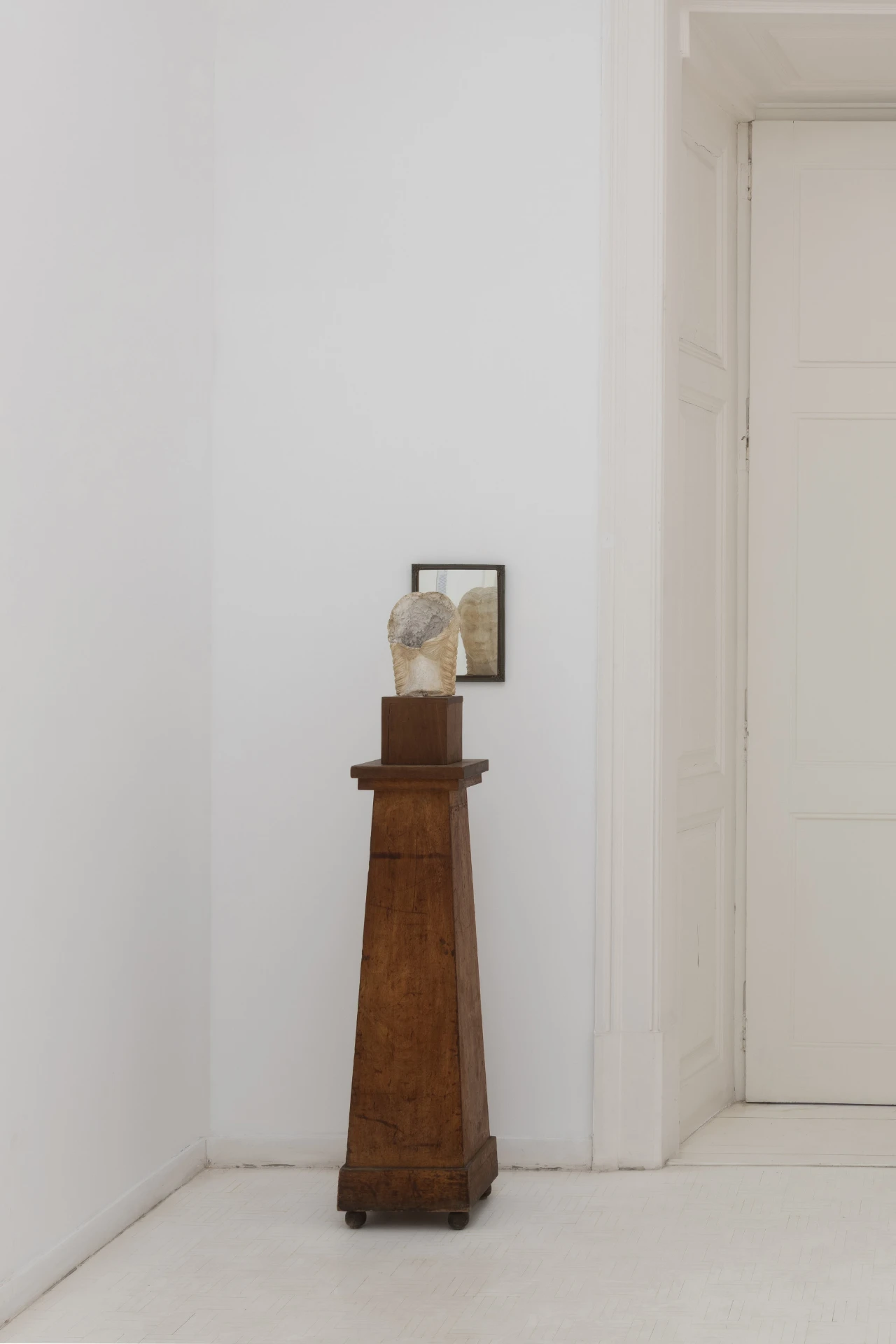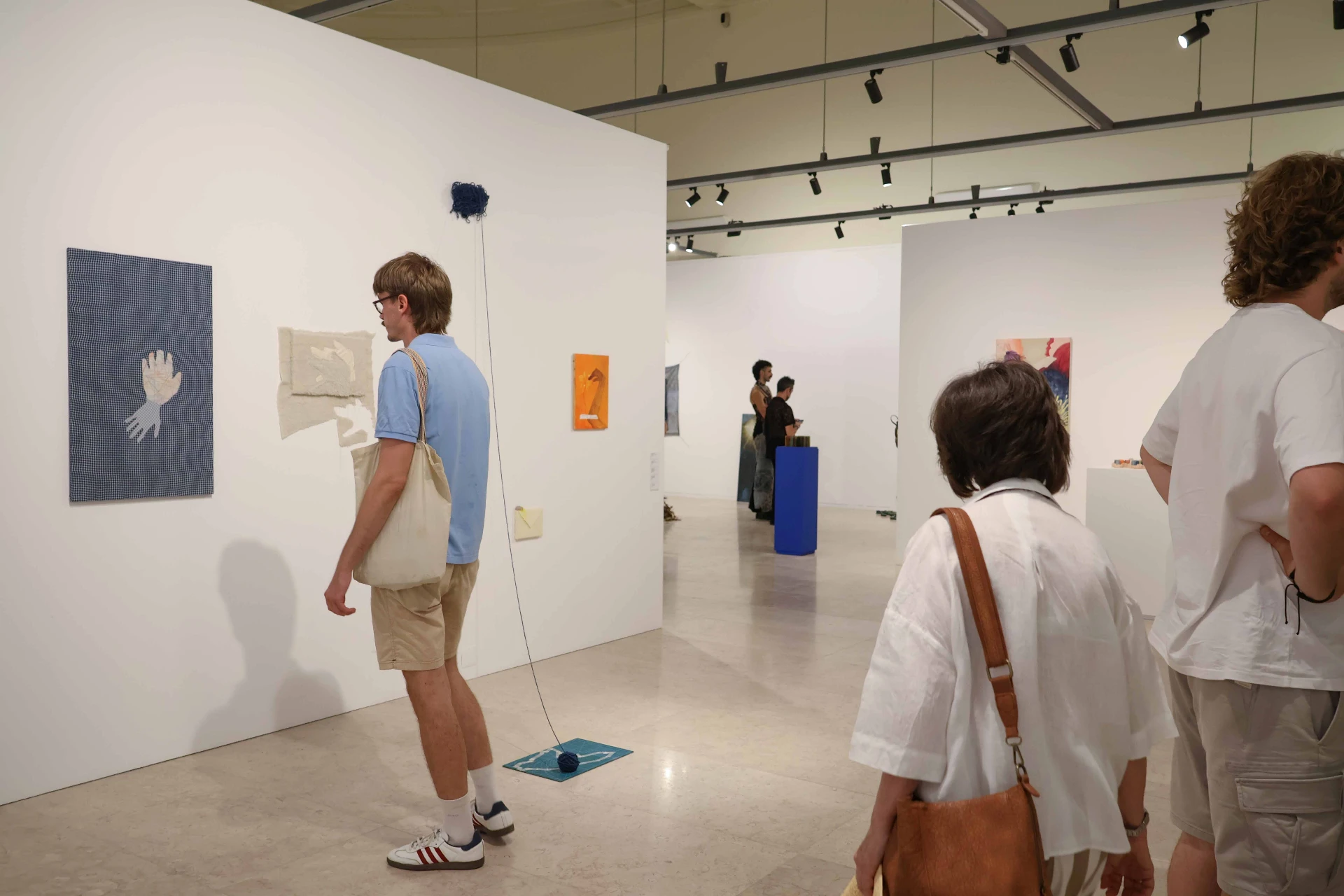Although a large share of the pieces are in metal, light and delicate forms arise and spread out in the larger gallery of the Coletivo Amarelo space. The exhibition The Skin of the Earth, by artist Natália Loyola and curated by Sofia Steinworth, takes us on a journey embellished by the experience of subtle and gracious things. And yet, in this opposing balance between lightness and heaviness, we are slowly overwhelmed by the magnitude of the facts and the gravity of the themes addressed.
The pieces on display are connected by a thin, muted layer that carries them back in time. Beyond geographical borders, and well beyond the noise, geological fragments recreate the nobility and uniqueness claimed by nature.
The artist invites us, and our heightened senses and emotions, to this idea of unity and affection.
Estratigrafias are spread out on the floor: numerous acrylic frames, some of which include small cardboard boxes in different colours, which, when specimens are collected, are used by geologists to identify the period when they were formed.
These frames, also containing different-sized photos of rocky areas, or fragments of different metals used and their origins, are topped by a white speaker hanging from above, deliberately emitting harsh sounds and noises to the ear, or at least discomforting to those unaccustomed to heavier sounds.
The artist claims that the sounds emanating from the overhead speaker stem from a request she made to friends to rub dry ice on metal surfaces. Captured through small contact microphones, the result is a set of beaming sound stimuli that follow one another and are heterogeneously reverberated throughout the gallery, spreading as far as the surface of the floor frames. Loyola invited visitors to handle the frames. As such, viewers will look for the angle of the acrylic pieces that best mirrors the sound coming from the speaker and magnifies it, giving the illusory effect that the acrylic pieces themselves are generating the sound and not the speaker. According to their use, the pieces gradually unveil different configurations on the floor, calling for a perpetual transformation of the initial exhibition design. The different weights and measures and the quest for the sound’s reflection on them prompt the body’s involvement and simulate the geologist’s hunched gestures when looking for evidence in time, in soil strata.
A metal cube stands next to the set of pieces already mentioned, pushing out a white paper tongue through a slit, where one can read Carlos Drummond de Andrade’s poems, continuously reiterated and gradually manipulated by artificial intelligence. Tape lists are heaped up on the floor, forming a wavy whole similar to the supermarket receipts coming out of the cash registers at the end of the day. The cash register, standing straight, only operates on working days and based on the stock market’s fluctuations.
A large metal structure looms in the background, with its slender, thin shapes. A deep slit shows that something may be happening inside. On the opposite end, the piece reveals another small opening, at eye level, where its contents can be seen. A pale projection of a now-extinct mountain from Pico do Cauê appears inside. White smoke then curls up to form thick, beautiful clouds that conceal the image. The vapor dilutes in the air and spills out through the metal piece’s holes, then converges for a few seconds on the gallery’s high ceilings.
The geological imprints, the mountain image being projected. The connection between geology, stratigraphy and art is ingrained in the exhibition. This fusion fascinates the artist, just like the theme of science, philosophy and language. Humanity’s first artistic manifestations were profoundly geological. They came to the fore in the Lascaux cave paintings[1], and flourished in Leonardo’s time[2]. They inspired painting, such as the German romanticism of Carl Spitzberg[3], or Caspar Friedrich. Geologists were also taught by sculpture and architecture, as part of a continuous and ongoing flow of knowledge and skills. Mutually contaminating each other (artists, geologists and scientists in general), they sought knowledge and a better understanding of the world[4].
In the smaller gallery, or Pequena Galeria, within the same Coletivo Amarelo space, the exhibition The Skin of the Earth concludes with Cabeça de anta era boi (2021), by Flávia Regaldo, with five prints reminiscent of the theme of geology, landscape and nature.
[1] According to Tobisch, O. T.
[2] According to Ester Boixereu Vila and Rosell Meseguer Mayoral.
[3] Ibidem.
[4] Ester Boixereu Vila and Rosell Meseguer Mayoral. (2023). The Geology in Art: Introduction La geología en el arte: introducción. BOLETÍN GEOLÓGICO Y MINERO 2023, VOL. 134 (1), 7-11 ISSN: 0366-0176 http://dx.doi.org/10.21701/bolgeomin/134.1/00.
